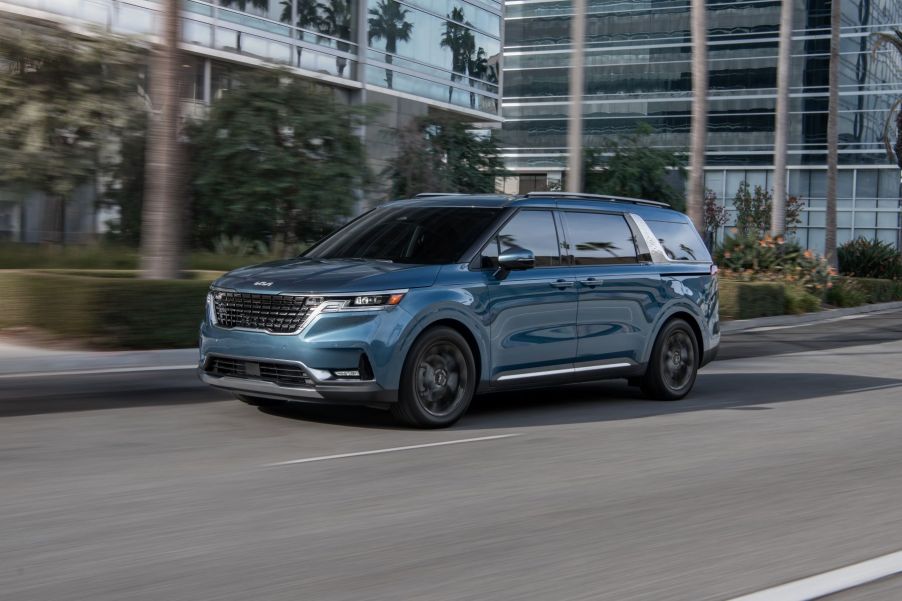
Do Roof Racks Decrease Fuel Economy?
Many car owners don’t consider the things that can impact fuel economy. Everything on a vehicle can have an effect on how much money you’re spending on gas regularly. Do roof racks decrease fuel economy? One publication recently did some thorough testing of a 2022 Kia Carnival to find out the truth. The answer might surprise you and could change your decision about driving around with factory-installed crossbars.
Car and Driver tested the Kia Carnival’s fuel economy

According to Car and Driver, it was initially pretty disappointed with the fuel economy of the 2022 Kia Carnival. During the 75-mph highway fuel-economy test, the Carnival achieved 25 mpg. Compared to other minivans and even midsize SUVs, that isn’t good enough to compete with hybrid powertrains and more fuel-efficient options. However, the publication had a theory of what could be impacting the performance, the roof racks sitting atop the vehicle.
The version of the Carnival C/D tested came with factory-installed crossbars on its roof. As a result, the testers were curious about how the roof rack affected the overall fuel economy. So it took the initiative and removed the crossbars to find out for themselves. The conclusion to the test was not only surprising but also amazing. It turns out that roof racks decrease fuel economy for the Kia Carnival and probably every other vehicle with them.
2022 Kia Carnival fuel economy with and without a roof rack

After testing, the Kia Carnival was able to push its fuel economy numbers in the right direction without the roof rack. C/D says removal took about 10 minutes, and the vehicle saw a 12 percent increase in miles per gallon. As a result, the Kia MPV improved by 3 mpg without its factory roof rack installed. Additionally, that’s better than the EPA-estimated numbers, listed as 26 highway mpg. Without crossbars, C/D managed to take the Carnival up to 28 mpg on the highway.
The publication says the units fitted to the top of the Carnival were shaped to be more aerodynamic than standard versions. That means fuel economy probably takes even more of a hit with other vehicles equipped with less aero-friendly versions. For many SUV and car owners, removing the roof racks from the vehicle might be best when they’re not in use. They only take roughly 10 minutes to remove and install, so it isn’t too much of a hassle. Obviously, if you’re someone who uses them often, it probably isn’t worth it.
How much does 3 mpg really matter?
Although a 3 mpg increase might not sound like a lot, it’s more than you think. Roof racks decrease fuel economy so much that removing them results in a 60-mile uptick in highway driving range from full to empty. For example, a 1,000-mile road trip would be possible with only one stop instead of two without the crossbars installed. Moreover, today’s national gas price average show a $14 decrease in costs for every 1,000 miles driven using regular fuel.
Based on driver’s average annual mileage of 13,476, that would result in triple-digit savings for many car owners. That kind of savings is almost impossible to argue against.
Roof racks decrease fuel economy
In conclusion, Car and Driver’s testing revealed that roof racks do decrease fuel economy. Even just a few mpg more means tremendous savings at the pump. Long term, it could mean hundreds or thousands of dollars in your pocket instead of going toward gas. If your vehicle came with crossbars as standard equipment pre-installed from the factory, removing them might be a good idea. It’s not too difficult to reinstall them when they’re needed.



